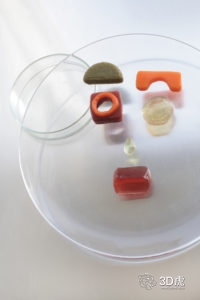Food 3D printer that converts food into nutrients
As we all know, food waste is a big problem in every country in the world, and so is the United States. According to estimates by the US Department of Agriculture, 30% to 40% of the country's total food supply is wasted. This is not all due to the appearance of fruits and vegetables, but a large part of it has never even been sold on supermarket shelves. As the company believes, customers will not buy vegetables and fruits that are not as good as they look. .
Once food is wasted to a certain size, it is enough for some people to change their product shopping habits, but many people are not aware of the seriousness of the problem, or know enough to make them buy twisted carrots or blocky apples. This is not just a problem in the United States. Here are some statistics from South Africa:
Just about 30% of the edible fruit and vegetable crops were refused to be sold in South Africa just because of the appearance.

44% of all wasted food is fruits and vegetables. The rest is composed of 26% grain, 15% meat and 13% root, tubers and oilseeds.
In South Africa's food supply chain, 26% of food waste occurs in agricultural production, 26% in post-harvest handling and storage, 27% in processing and packaging, and 17% in distribution and retail processes, 4 % at the consumer level.
Studio H, a startup that produces South Africa's first food 3D printer, shares the facts. To demonstrate what the printer can do, Studio H collects ugly fruits and vegetables rejected by supermarkets and customers, makes them into mud, and prints them into more attractive shapes.

Studio H founder Hannerie Visser said: “3D printing may be the perfect tool to reduce food waste. To try this medium, we designed Salad 2.0. We made a bunch of unconventional fruits and vegetables, which are usually Wasted the mud and added gelatin so that we could print the concentrate into a colorful three-dimensional jelly shape with high nutrient content."
For this problem, or the discerning adult, when they talk about their food, they become blunt, often like children. 3D printing of ugly fruits and vegetables is a wonderful idea to reduce food waste, and it is also a way to show people how stupid they are rejected because of their appearance. 3D printed food itself may not save food waste problems around the world, but one measure may be to present delicious food to the customer and then display it from its ugly picture. This makes people realize that even ugly fruits and vegetables can taste it perfectly, which may be enough.